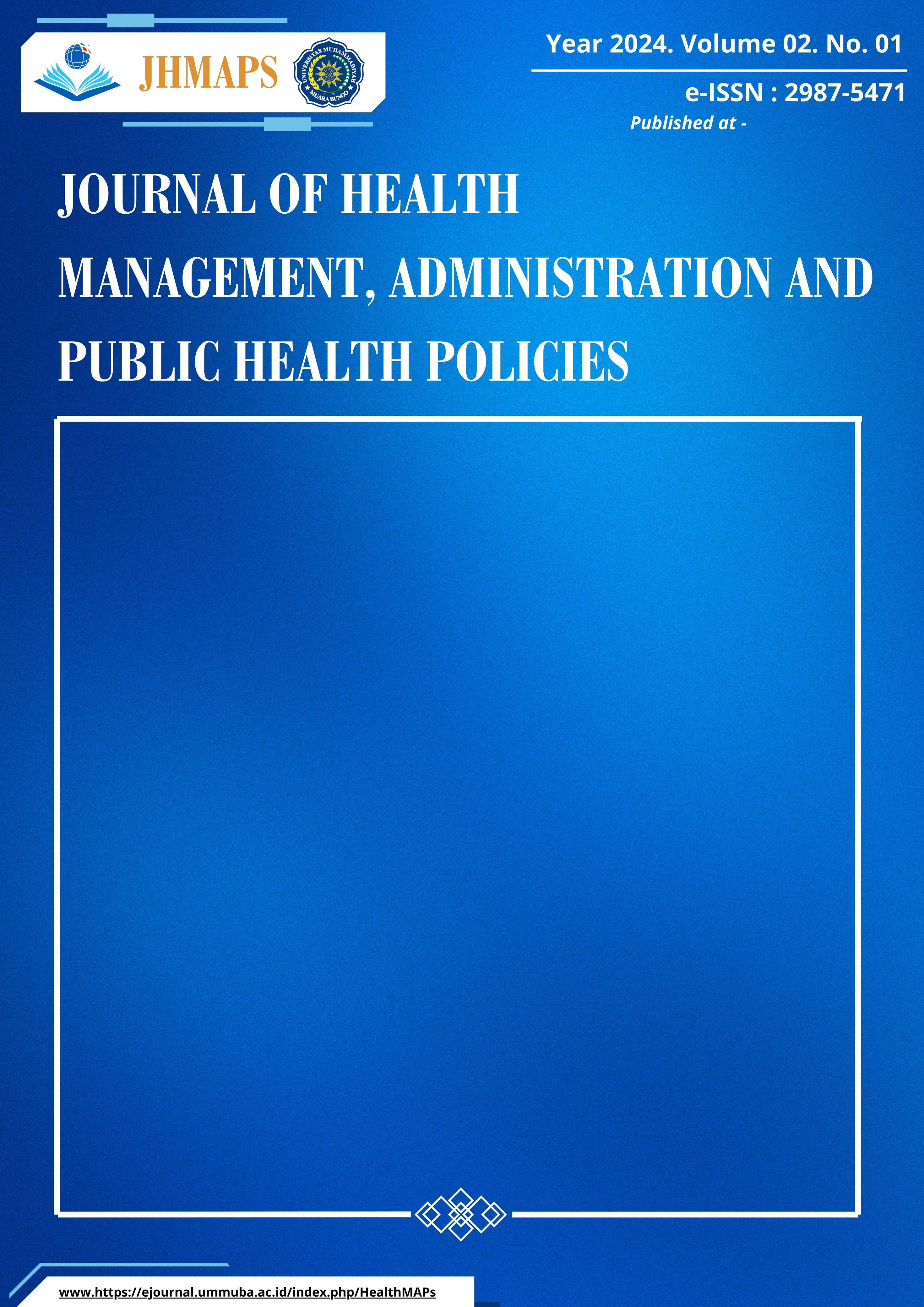THE HYPNOTHERAPY IN OBSTETRIC CARE : SYSTEMATIC REVIEW OF EVIDENCE AND POTENTIAL USE IN CLINICAL PRACTICE
Hipnoterapi dalam Asuhan Kebidanan: Tinjauan Sistematik atas Evidensi dan Potensi Penggunaan dalam Praktik Klinis
Abstract
Pregnancy, childbirth and postpartum are a series of events that significantly change a mother's life and are often accompanied by various physical and emotional challenges and problems. This review of this study was to analyze the trends and effectiveness of hypnotherapy interventions in pregnancy and childbirth nationally and internationally through electronic databases such as PubMed, MEDLINE, PsycINFO and Google Scholar to identify relevant studies. Article quality assessment uses Critical Appraisal Tools for Systematic review. The results of the literature review show that hypnotherapy interventions provide promising results in reducing labor pain, relieving anxiety, reducing symptoms of nausea and vomiting, increasing maternal satisfaction and improving the overall labor experience. Hypnotherapy can be used as one of the complementary interventions in the field of obstetrics and maternity care. Further research needs to focus on the establishment of standard protocols, experiments with random sampling methods on larger subjects and exploring the long-term effects and cost-effectiveness of hypnotherapy interventions in various obstetric treatments.
References
Aghniya, R. (2024) ‘HIPNOTERAPI DALAM PELAYANAN KEBIDANAN KOMPLEMENTER’, in PELAYANAN KEBIDANAN KOMPLEMENTER. Padang: Get Press Indonesia, pp. 67–81.
Anggraeni, L. and Lubis, D. R. (2022) ‘Hypnobirthing sebagai Self Hypnosis dalam Menurunkan Tingkat Kecemasan Ibu Hamil’, Jurnal Penelitian Kesehatan Suara Forikes, 13(11), pp. 62–67. doi: 10.33846/SF.V13I0.1912.
Badaoui, A., Kassm, S. A. and Naja, W. (2019) ‘Fear and Anxiety Disorders Related to Childbirth: Epidemiological and Therapeutic Issues’, Current Psychiatry Reports. Current Medicine Group LLC 1, 21(4). doi: 10.1007/S11920-019-1010-7.
Beebe, K. R. (2014) ‘Hypnotherapy for Labor and Birth’, Nursing for Women’s Health. Blackwell Publishing, 18(1), pp. 48–59. doi: 10.1111/1751-486X.12093.
Buran, G. and Aksu, H. (2022) ‘Effect of Hypnobirthing Training on Fear, Pain, Satisfaction Related to Birth, and Birth Outcomes: A Randomized Controlled Trial’, Clinical Nursing Research. SAGE Publications Inc., 31(5), pp. 918–930. doi: 10.1177/10547738211073394.
Catsaros, S. and Wendland, J. (2020a) ‘Hypnosis-based interventions during pregnancy and childbirth and their impact on women’s childbirth experience: A systematic review’, Midwifery. Churchill Livingstone, 84. doi: 10.1016/J.MIDW.2020.102666.
Catsaros, S. and Wendland, J. (2020b) ‘Hypnosis-based interventions during pregnancy and childbirth and their impact on women’s childbirth experience: A systematic review’, Midwifery. Churchill Livingstone, 84. doi: 10.1016/j.midw.2020.102666.
Catsaros, S. and Wendland, J. (2023) ‘Psychological impact of hypnosis for pregnancy and childbirth: A systematic review’, Complementary Therapies in Clinical Practice. Churchill Livingstone, 50. doi: 10.1016/j.ctcp.2022.101713.
Cyna, A. M. et al. (2013) ‘Hypnosis antenatal training for Childbirth: A randomised controlled trial’, BJOG: An International Journal of Obstetrics and Gynaecology, 120(10), pp. 1248–1259. doi: 10.1111/1471-0528.12320.
Downe, S. et al. (2015) ‘Self-hypnosis for intrapartum pain management in pregnant nulliparous women: A randomised controlled trial of clinical effectiveness’, BJOG: An International Journal of Obstetrics and Gynaecology, 122(9), pp. 1226–1234. doi: 10.1111/1471-0528.13433.
Fernández-Gamero, L. et al. (2024) ‘Impact of Hypnotherapy on Fear, Pain, and the Birth Experience: A Systematic Review’, Healthcare 2024, Vol. 12, Page 616. Multidisciplinary Digital Publishing Institute, 12(6), p. 616. doi: 10.3390/HEALTHCARE12060616.
Finlayson, K. et al. (2015) ‘Unexpected consequences: Women’s experiences of a self-hypnosis intervention to help with pain relief during labour’, BMC Pregnancy and Childbirth. BioMed Central Ltd., 15(1), pp. 1–9. doi: 10.1186/S12884-015-0659-0/FIGURES/1.
Halsband, U. and Gerhard Wolf, T. (2019) ‘Functional Changes in Brain Activity After Hypnosis: Neurobiological Mechanisms and Application to Patients with a Specific Phobia—Limitations and Future Directions’, International Journal of Clinical and Experimental Hypnosis. Routledge, 67(4), pp. 449–474. doi: 10.1080/00207144.2019.1650551.
Kusuma Wardani, L. and Divas Nassyra, D. (2024) ‘Reduction Of Anxiety In Parting Women With Intervention Hypnosis Five Finger In The Hospital Aura Syifa’, Journal of Health Science Community. Institut Ilmu Kesehatan STRADA Indonesia (STRADA Indonesia Health Sciences Institute), 4(3), pp. 211–215. doi: 10.30994/JHSC.V4I3.215.
Madden, K. et al. (2016) ‘Hypnosis for pain management during labour and childbirth’, The Cochrane Database of Systematic Reviews. John Wiley and Sons, Inc. and the Cochrane Library, 2016(5). doi: 10.1002/14651858.CD009356.PUB3.
Mahanani, S. W. et al. (2022) ‘PENGARUH HIPNOTERAPI TERHADAP PENURUNAN KECEMASAN IBU HAMIL DAN BERSALIN’, Midwifery Care Journal. Poltekkes Kemenkes Semarang, 3(1), pp. 22–29. doi: 10.31983/MICAJO.V3I1.8095.
Ng, B. Y. and Lee, T. S. (2008) ‘Hypnotherapy for sleep disorders’, Annals of the Academy of Medicine Singapore. Academy of Medicine Singapore, 37(8), pp. 683–688. doi: 10.47102/ANNALS-ACADMEDSG.V37N8P683.
Octavia, Y. T., Hasibuan, E. K. and Siahaan, J. M. (2024) ‘THE EFFECTIVENESS OF ANTENATAL HYPNOTHERAPY ON ANXIETY IN FACING THE CHILDBIRTH PROCESS’, JURNAL MUTIARA NERS. Universitas Sari Mutiara Indonesia, 7(1), pp. 55–61. doi: 10.51544/JMN.V7I1.4678.
Ozgunay, S. E. et al. (2022a) ‘Adjuvant Hypnotherapy for Hyperemesis Gravidarum: A Randomized Pilot Study’, International Journal of Clinical and Experimental Hypnosis. Routledge, 70(3), pp. 277–285. doi: 10.1080/00207144.2022.2098026.
Ozgunay, S. E. et al. (2022b) ‘Adjuvant Hypnotherapy for Hyperemesis Gravidarum: A Randomized Pilot Study’, International Journal of Clinical and Experimental Hypnosis. Routledge, 70(3), pp. 277–285. doi: 10.1080/00207144.2022.2098026.
Puri, A. (2023) ‘Hypnotherapy as an intervention in infertility treatment’, Arts & Humanities Open Access Journal . MedCrave Publishing, Volume 5(Issue 3), pp. 214–218. doi: 10.15406/AHOAJ.2023.05.00211.
Soysal, Ç. and Yilmaz, E. (2022) ‘Is hypnosis an effective alternative to medical therapy for hyperemesis gravidarum?’, Journal of Surgery and Medicine. Fatih BAŞAK, 6(2), pp. 144–148. doi: 10.28982/JOSAM.1037924.
Williamson, A. (2019) ‘What is hypnosis and how might it work?’, Palliative Care. SAGE Publications, 12. doi: 10.1177/1178224219826581.

| Keywords | : |
Keywords:
Hipnoterapi, Hipnosis, hipnoterapi kehamilan, hipnoterapi persalinan, hipnoterapi kebidanan, hipnosis kebidanan Hypnotherapy, pregnancy, childbirth, obstetrics, hypnosis
|
| Galleys | : | |
| Published | : |
2024-06-01
|
| How to Cite | : |
aghniya, R. A., Widiyanti, S. W., & Oktaviani, I. (2024). THE HYPNOTHERAPY IN OBSTETRIC CARE : SYSTEMATIC REVIEW OF EVIDENCE AND POTENTIAL USE IN CLINICAL PRACTICE: Hipnoterapi dalam Asuhan Kebidanan: Tinjauan Sistematik atas Evidensi dan Potensi Penggunaan dalam Praktik Klinis. Journal of Health Management, Administration and Public Health Policies , 2(1), 36–51. https://doi.org/10.52060/hmaps.v2i1.2173
|
| Issue | : |
Copyright (c) 2024 Journal of Health Management, Administration and Public Health Policies

This work is licensed under a Creative Commons Attribution 4.0 International License.


.png)

